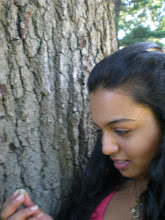Dean Young's poems are engaging, no doubt. I feel like they should be read at least 3 times. First for the initial perusal, making note of lines you love, words and references you don't understand. Second to insert the new understandings of those words and references, and admire again those lines you loved. And third just to enjoy the aesthetic value of piecing it all together, and experiencing it all again. But perhaps this is how you should read anything.
If someone asked me what Young's poetry is about, I'd say "life". This sounds so paper-cutter perfect, every-origami-is-a-crane, obviously all literature is about life in some sense. But I feel like Young gives his readers snippets of life that although they may not have experienced, they can relate to, and life-lessons that just seem to ring so
true.
Dean Young's Life Lessons:Acceptance Speech: "It's not the blizzard, it's three days after."
So much focus is given to the tragedy of the event, but what about the regrowth afterwards? Life fighting to prevail- "ruined crocus pronging through", new relationships formed with strangers- "Everyone's easily identifiable beneath the funny mask". In our world, there is so much focus on the destruction in the Middle East, but what about the new infrastructure post-Taliban? So much focus on jobs being sent to other countries, but what about the new development in a country that has battled poverty for decades? So many front-page stories of lives lost, but only back page blurbs about lives created. (Two events that I can think of that really defy this pattern are post-9/11, and even more, post-Haitian earthquake. The aftermaths of both of these events have been filled with heartfelt help and more hope than pity, which is truly liberating.)
Ash Ode: "...all things loved are pursued and never caught,"
People's passions do not just come to a halt when they achieve milestones. This is because the love they have for the art, person, etc. cannot just be fulfilled by winning a Grammy or getting married. The desire continues past all that.
Centrifuge: "Save us from single formulas."
The idea that there is no one correct way to do things... can translate to modern poetry as well. Modern poetry 'breaks all the rules', but that's alright because there's no set formula for expression. "the lingering kiss... there's yet to be a single formula for it."
My Work Among The Insects: "It is best not to make everything a metaphor of one's own life"
I read this, too, as a comment on poetry. Poets must draw from experiences outside their own to connect to audiences outside themselves. They also sometimes must just tell it like it is, rather than trying to cram the events in their lives into some cardboard box of a metaphor.
Poem Without Forgiveness: "nothing can be taken back"
This one just stuck with me because its something my mother's said to me all my life. "Time never comes back"- I hear it constantly. It's too true. Amends can be made, recoveries can happen, but there's no changing the fact that what has happened has happened.
Exit Exam: No particular quote, just the whole poem.
This poem is my favorite out of the whole group. I think it relates a little bit to some of the messages of the first poem, "Acceptance Speech", as well. We are so afraid of some things, without even really knowing anything about them. We focus so much on the tragedy of death, but we have no idea what happens post-mortem. For all we know, life-after-death could be completely perfect. We don't know if we will "be released from the wheelhouse" and go to nirvana or will come back on this Earth as another being. We don't know if there is just nothing after death or if there are such things as Heaven and Hell. The possibilities of Death are just as wide open to us, probably more so, than the possibilities of Life. Why then is there so much sorrow associated with it? Why do we assign it as something negative without even knowing what it is? (I should note that there are some cultures that do not view death as negative at all, and funerals in those societies are more of a celebration of the person's life than a mourning of their loss.)
A little more...There were so many things I underlined in the course of reading these poems, like "bole" and "Basho". Normally I would be extremely frustrated at so many references to things I didn't know about or uses of words I didn't understand. However, reading Young's work made me interested in finding out more about all of these references. I feel like he drew from what he knew and what he read and experienced, and I appreciated that he was doing it without giving the impression that he was going out of his way to sound clever. Thus, I didn't mind, and rather enjoyed clicking my way through Wikipedia and Dictionary.com searches.
p.s. "bole" = stem/trunk of a tree, and "Basho" was a Japanese Haiku master in the 1600s.

